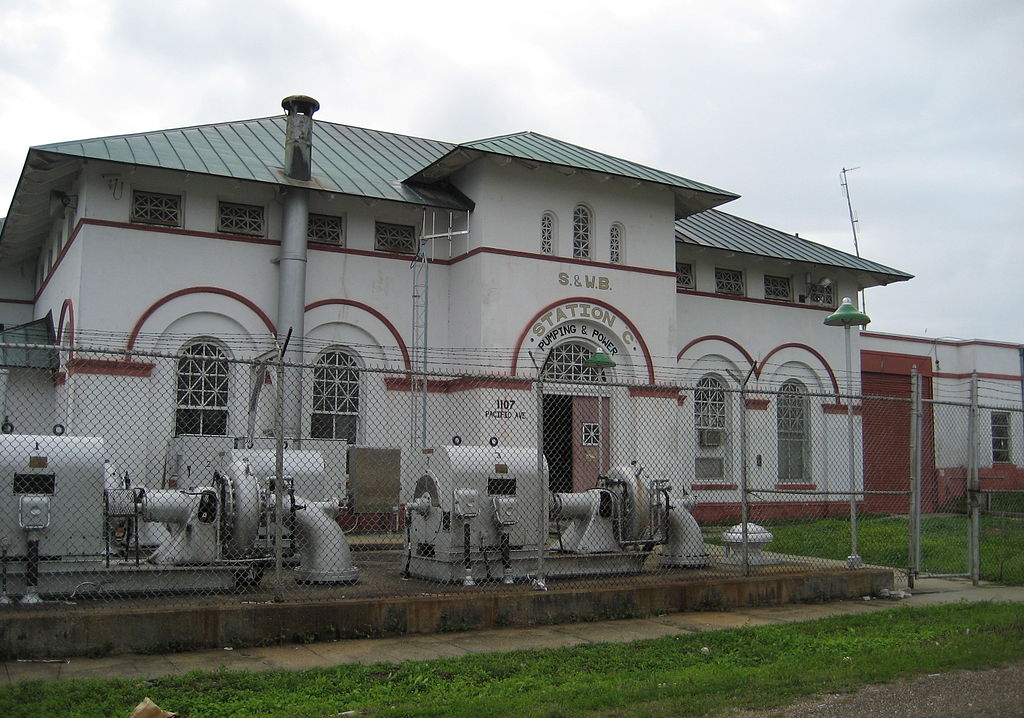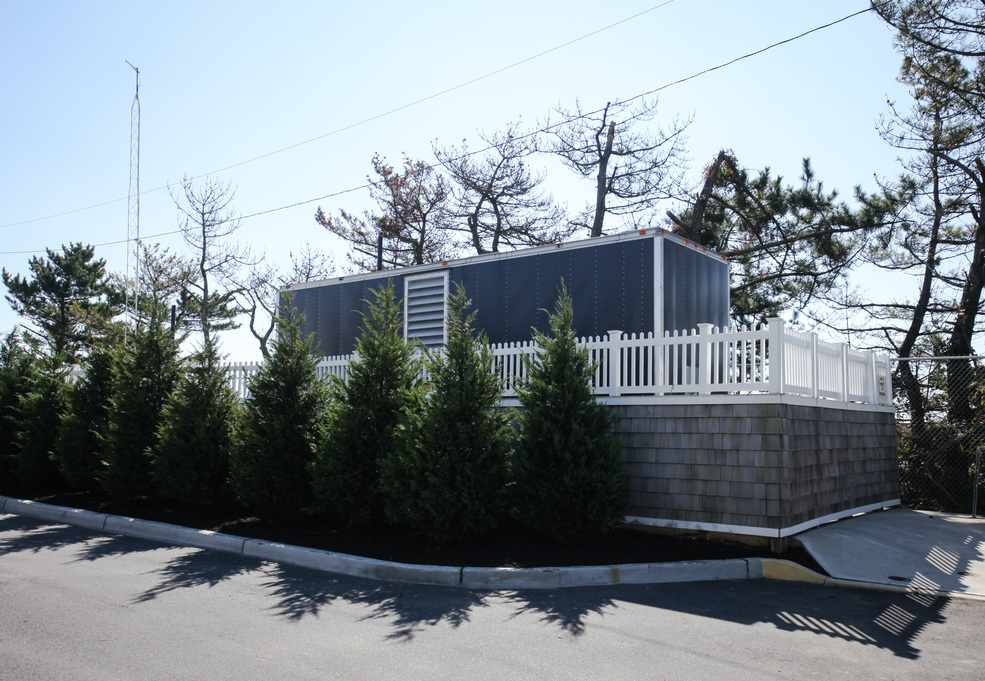Saving New Orleans Could Mean Borrowing a Lesson from Hurricane Sandy
Credit to Author: Caroline Haskins| Date: Sat, 26 Aug 2017 00:08:23 +0000
On August 10, Crissy Comeaux spent a half hour trapped in her car as New Orleans’ midtown flooded with rainwater.
“Me and my stepdaughter had to pull to the side until the flood water went down a little bit for us to go through,” she said. “But the theater where we wanted to see the movie got flooded. It was a lot—you heard the water on the bottom of the car.”
Comeaux, who lives and manages a credit union branch in New Orleans, said that she wouldn’t—as some people had—call the storm a “mini Katrina” because the devastation from Katrina was so extreme. But the August 10 storm was powerful enough to dump nine inches of rain into the city in just three hours—enough to be designated as a 50- to 100-year flooding event.
Meanwhile, Hurricane Harvey has intensified to a Category 4 storm and is preparing to bring 10 or more inches of rain to New Orleans, as well as devastating flooding to Houston.
The problem for New Orleans is that it simply doesn’t have the technology to pump water out of the city as quickly as it needs to given a heavy storm. Fred Zeigler, a senior forecaster at the National Weather Service’s Louisiana’s station, told me that New Orleans is particularly vulnerable to flooding due to its geography.
“In the city of New Orleans, it’s almost like a bowl,” he said. “So that water has to be pumped out—it’s not a situation of draining it. When the water falls, it goes to the lowest spots in the city.”
Although New Orleans necessarily relies on water pumps, fourteen water pumps are currently broken throughout the city. Only two of them have been repaired since the flooding event on August 10.
But since New Orleans is so prone to flooding, and it received $10 billion from FEMA to rebuild after Katrina, why does it remain so seemingly unprepared for Harvey?

Part of the problem is attributable to the city’s aging infrastructure. The New Orleans Sewerage and Water Board (SWB) generates its own electricity for its water pumps, but the electricity-generating turbines were built in the late 1800s. Entergy, the company that produced the turbines, uses a 25-hertz energy cycle that makes it incompatible with most modern turbines.
Andrew Baham is a resident of New Orleans whose family roots in the city reach back multiple generations. As a musician, he’s heavily involved with the city’s culture, but he’s also familiar with the relationship between SWB and Entergy. He believes that the relationship has hindered technological innovation.
“The SWB has a privately owned company [Entergy] who has a monopoly on the water system,” he said. “So they don’t have as much of an incentive to be innovative because there’s no competition.”
Charlotte Cavell, a representative for Entergy, told me in an email that the company’s turbines delivered power “within industry standards” during the August 5 flooding event.
“Entergy New Orleans continues to monitor development of Hurricane Harvey and prepare for its potential effect upon the city,” she said. “We are in contact with the city and our crews are on standby and ready to restore power as needed.”
Another part of the problem is political. Mayor Mitch Landrieu blamed the SWB—which he heads—for giving him false information and asked top SWB officials to resign. Former SWB member Scott Jacobs, who resigned earlier this year, has said that a lack of funding consistently leaves the SWB unable to perform to the best of its ability.
To make matters worse, FEMA asked the New Orleans city government to return $2 billion intended to be used to repair the city’s drainage and pumping systems because the city did not use the money. The estimated cost of a pumping system overhaul is $1 billion.
Baham said that the people of New Orleans have no illusions about being protected from extreme weather events.
“There really hasn’t been any government trust, period, to handle it,” he said. “This is not a thing that just came about. This is years, perhaps a decade or two of distrust. The people are mad because we don’t see anything new that has come about to change the situation.”
Despite the necessity and economic feasibility of a pumping system overhaul, New Orleans appears to be too politically bogged down to make any real progress on infrastructure improvements.
But there could be a cheap, politically feasible solution. For Monmouth County, New Jersey, which was right in the paths of hurricanes Irene and Sandy in 2011 and 2012, this meant water pumping stations on wheels.
Mobile water pumping stations put water pumps and corresponding electrical systems into a mobile trailer. This way, it can be taken out of harm’s way and then brought back into an area once a storm finishes. Doing this preserves expensive equipment that can keep a city on its feet in the wake of an extreme flood event.
The Army Corps of Engineers temporarily loaned portable pumps to New Orleans in the wake of Hurricane Katrina to supplement its failing stationary pumps. But mobile water pumping stations are enclosed rather than exposed, and would be a permanent asset of a city’s sewage and water systems as opposed to a temporary lend.

For Monmouth County, mobile water pumping technology saved an estimated $1.5 million in theoretical damage to a stationary water pumping facility. It also got eight shorefront towns up and running again after Sandy within a day. After a FEMA reimbursement, the total cost for the stations was only $640,000—astronomically low compared to New Orleans’s estimated $1 billion water pump replacement plan.
Timothy Timbrook, superintendent of New Jersey’s South Monmouth Regional Sewerage Authority, which used these mobile water pumping stations, told me the mobile stations have “definitely” been a success.
“We have an area by a lake, and every time you get a heavy rain event, it flooded,” he said. “We had a [water pumping] station put out numerous times, and it just got to the point where we said, ‘Alright, we’re not doing this anymore. We’re gonna go a different route.'”
However, Timbrook said that the highest point in southern Monmouth County is just up the road from the stationary water pumping facility. So transporting these water pumps the day after an extreme weather event was relatively easy.
“For us, it makes sense—we have higher ground nearby,” he said. “But it might not be the right fit for everyone.”
I spoke with with Rick Rambo, the vice president of Pritchard Brown, the company that manufactured the enclosures of Monmouth County’s mobile water pumping stations. I asked whether mobile water pumping stations could work in an area like New Orleans.
“It really could,” he said. “I don’t have the knowledge [of New Orleans] as to if there’s areas that don’t flood. But we’re a custom manufacturer, so we can come up with the technology to meet their needs.”
According to Brittany Trotter, a representative for FEMA, mobile water pumping stations are funded under FEMA’s Hazard Mitigation Assistance program, and the application period to receive assistance is open until November 14.
Motherboard contacted the SWB, and it did not return multiple requests for comment.
However, as I spoke to local people in Louisiana, it was apparent that mobile water pumping stations would work as a temporary solution—not as a replacement for existing water pumps.
Harry Fink, a citizen of New Orleans and a friend of mine at New York University, lived through Hurricane Katrina, and his sister lost her car in the August 10 flooding. He said that a massive technological overhaul of New Orleans’s water pumps are necessary if the city hopes to survive the effects of climate change.
“If we’re gonna fight this and we’re gonna live here, then we have to have state of the art equipment, because things will only get worse,” he said. “Rainstorms will only get more ubiquitous and more powerful. Life in Louisiana won’t be able to happen until there’s a completely streamlined, adaptive system to climate change and flooding.”
Fink and Baham both cited Dutch infrastructure as an example of successful climate change flooding mitigation.
Rotterdam, one of the Netherland’s most populous cities, exists 90 percent below sea level. Ahmed Aboutaleb, the mayor of Rotterdam, told The New York Times that this has made innovation a necessity.
“If the water comes in, from the rivers or the sea, we can evacuate maybe 15 out of 100 people,” he said. “So evacuation isn’t an option. We can escape only into high buildings. We have no choice. We must learn to live with water.”
“Here’s the bottom line: this is an existential struggle for all of South Louisiana.”
The cultural attitude of existing with the water is evident in Rotterdam’s design choices. A prime example is Rotterdam’s Water Squares, or parks designed with drainage systems which trap and contain water during flooding events.
Even Rotterdam’s water pump facilities suggest that people can safely coexist with floods, and the results can be beautiful.
For instance, the Essenbergsingel water pumping station, constructed in May by Dutch architectural firm Royal Haskoning DHV, uses a teardrop design and uses modernized pipes and electrical systems. The Poppekinderen water pumping station, constructed by Iv-Groep, is designed to not disrupt the aquatic Middelburgse Vesten ecosystem, and also serves as a research space for local scientists and researchers.
But ultimately, the New Orleans region is already at risk from extreme weather events, and modernized water pumping stations would be a massive political undertaking for the city. And according to Fink, dangerous, climate change-driven storms are are already threatening the entire region.
“Here’s the bottom line: this is an existential struggle for all of South Louisiana,” he said. “Who knows what the more efficient thing to do is, maybe everyone should just pack up and leave. But most people don’t want to.”
I asked Comeaux how she hopes New Orleans will respond to extreme weather events in the future. She said that she wants the government officials responsible for people’s safety to be held accountable.
“I have an employee that was affected by [the August 10 flooding]—she had to walk in water to her chest to get home,” she said. “I feel like we do have the technology, we do have the right people, but we’re not holding anyone accountable. If we’re not gonna hold anyone accountable, things like this will continue to happen.”